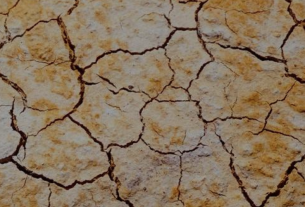|
Getting your Trinity Audio player ready...
|
Sybryn L. Maes explains how they, alongside colleagues, developed an Explore Before You Restore framework, and illustrates how these concepts may impact restoration outcomes by influencing degradation and recovery trajectories.
To help restore ecosystems, we, a group of international experts in resilience & restoration, propose using a new framework called Explore Before You Restore (EBYR) throughout the restoration project cycle. Even though there are international, science-based guidelines for restoration projects, the results can vary widely. Often, this is because ecosystems respond in unexpected ways to restoration interventions. We believe that incorporating some complex systems science concepts—like regime shifts, ecological resilience, and ecological feedbacks—can significantly improve restoration outcomes.

Below, we discuss how our approach works:
Regime shifts
These are significant, sudden changes in an ecosystem caused by environmental disturbances like pollution or climate change pushing the ecosystem over the edge. Here is a theoretical figure of how a regime shift takes place:

If a regime shift occurs without something called “hysteresis” (which means the ecosystem can’t easily go back to how it was before), we might be able to restore the ecosystem relatively easily with simple interventions. But if hysteresis is involved, it becomes much trickier and more expensive to restore the ecosystem to its previous state. So, before we start trying to fix a degraded ecosystem, restoration teams should try and assess the following (EBYR!):
- Has the ecosystem already undergone a regime shift?
- Is there a risk of a regime shift happening soon?
To answer these questions, restoration teams should assess “lagging” indicators of resilience, such as changes in vegetation structure or nutrient concentrations, and monitor trends in “leading” indicators of resilience or “early-warning signals”, such as changes in tree growth or vegetation greenness in response to disturbances like drought or fire.
Ecological resilience
Current restoration guidelines often focus on promoting resilience, but sometimes, being too resilient can actually hinder an ecosystem’s recovery. We need to be careful not to reinforce behaviors that make things worse. Here is another question that restoration teams should therefore be asking themselves (EBYR!):
- Is there any evidence that the ecosystem is stuck in an undesirable state?
To determine this, restoration teams should look for strong ecological feedbacks that maintain the degraded state. We provide some specific examples below.
Ecological feedbacks
These are loops, where what is happening in the ecosystem, like a fire or a drought, affects the environment, and vice versa. Some of these loops help maintain ecosystem states, while others contribute to their decline, leading to a regime shift. Restoration teams should try to understand the following about feedbacks in their degraded system (EBYR!):
- What factors are influencing the ecosystem positively or negatively?
- How can we strengthen the beneficial loops and weaken the harmful ones?
To assess these questions about feedbacks, restoration teams should observe how the specific environmental factors and disturbances in their ecosystem interact with ecosystem dynamics over time.
Here is a figure that visualizes the different phases of a Restoration Project Cycle (from Assessing to Maintaining), highlighting where we believe these three concepts from Complex Systems Science should be incorporated to improve restoration outcomes:

To illustrate these concepts, let us look at some examples:
Tropical floodplain forests
In tropical floodplain forests, repeated wildfires can decrease tree cover. This reduction in tree cover (feedback) leads to a depleted seed bank (regime shift), which means there are fewer seeds available for new trees to grow. As a result, the low tree cover persists (unhelpful resilience), making it hard for the forest to recover even if the fires stop (hysteresis). Because these changes persist even after the initial degradation has been addressed, restoration becomes more challenging. This figure visualizes the issue:

To ensure successful ecosystem recovery here, it is not only crucial to identify the feedbacks that maintain the undesired savanna state but also those that support the desired forest state. For instance, promoting tree cover through assisted natural regeneration or seeding will strengthen helpful resilience and facilitate the shift to the forest regime, while fire protection measures will weaken unhelpful resilience and disrupt the savanna state:

Coral reefs
If a coral reef has shifted to an algal-dominated state (regime shift) due to factors like fishing and eutrophication, simply promoting helpful resilience by reintroducing coral species may not be enough to bring back the coral-dominated state. This is because the mechanisms maintaining algal dominance (feedback) can prevent coral recruitment and growth, adding to the degraded state of the reef (hysteresis). Thus, interventions that disrupt algal dominance, such as reducing nutrient runoff or restoring herbivore fish populations that feed on algae, may be necessary for successful restoration.
We will be sharing more about our approach on social media platforms Instagram and X, and at the IUFRO conference in Stockholm (June 2024 – Forests & Societies Towards 2050).
Read the full article “Explore before you restore: Incorporating complex systems thinking in ecosystem restoration” in Journal of Applied Ecology.
